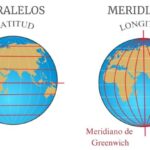We explain what altitude is, how it is measured and how it influences the climate. Also, what is the difference between latitude and altitude.

What is altitude?
In geography, altitude is called the measurement of the vertical distance between any given point on Earth relative to sea level. This measurement is expressed by a figure and the unit of distance, which can be meters above sea level (masl) or feet above sea level, in countries that do not use the metric system.
Measuring altitude is important for disciplines such as meteorology, geography, aeronautics and even architecture, since At higher altitudes, atmospheric pressure and temperature conditions vary. So does the concentration of oxygen in the air, which is why it is common to suffer from dizziness or “moor sickness” when suddenly ascending to very high regions.
Altitude, along with latitude and longitude, are some of the most common measurements on maps and/or GPS-style global positioning systems.
How is altitude measured?

The altitude, as we said, It is measured in meters above sea level (masl) or in other similar measures. For your calculation an altimeter is used. It is common to find altimeters in aeronautical and sports vehicles, and they can even be incorporated into cell phones and other electronic devices.
Altitude above sea level
Altitude is measured in comparison to sea level, since the sea level is always straight and what is below is submerged. However, there is no uniform sea height on the entire planet, and each country uses a certain sea level as a convention to measure their altitudes. But this difference in levels is so minute that it is almost insignificant.
The problem with sea level is that With the passage of time it has changed As global warming melts the poles and adds more water, sea level rises by millimeters. On the other hand, the sea is affected by tides, as well as by tectonic movements that generate coasts of emersion (they come out of the water) and submergence (they submerge in it).
Altitude and latitude
These two concepts are often mentioned, but they do not mean the same thing. While altitude has to do with the height above sea level of a place, its latitude refers to the geographical location on the earth's globe taking as a reference the imaginary line of the equator, which divides the globe into two hemispheres.
Thus, there are two different latitudes: the north (northern hemisphere) and the south (southern hemisphere), measured in degrees (°), the equator being zero latitude (0°) and the north and south poles +90° and -90° respectively.
Latitude also allows us to divide the world into climatic regions: the tropics, the temperate regions and the circumpolar zones, given that as we move towards the poles, sunlight impacts less directly and the climate is colder.
How does altitude influence the climate?

Altitude, as we said before, directly influences temperature and pressure, and therefore the climate as well. Thus, it is possible to establish a series of thermal floors as we ascend in altitude of some specific relief: “floors” because, like the floors of an elevator, they follow one another as one ascends.
In the intertropical regions of the globe, for example, for every 1.8 meters of height the temperature will decrease by 1 °C compared to sea level.
Continue with: Mountain
References
- “Altitude” in Wikipedia.
- “Altitude” in Encyclopedia.us.
- “Altitude” in National Geographic.
- “Altitude (linear mesurement)” in The Encyclopaedia Britannica.





